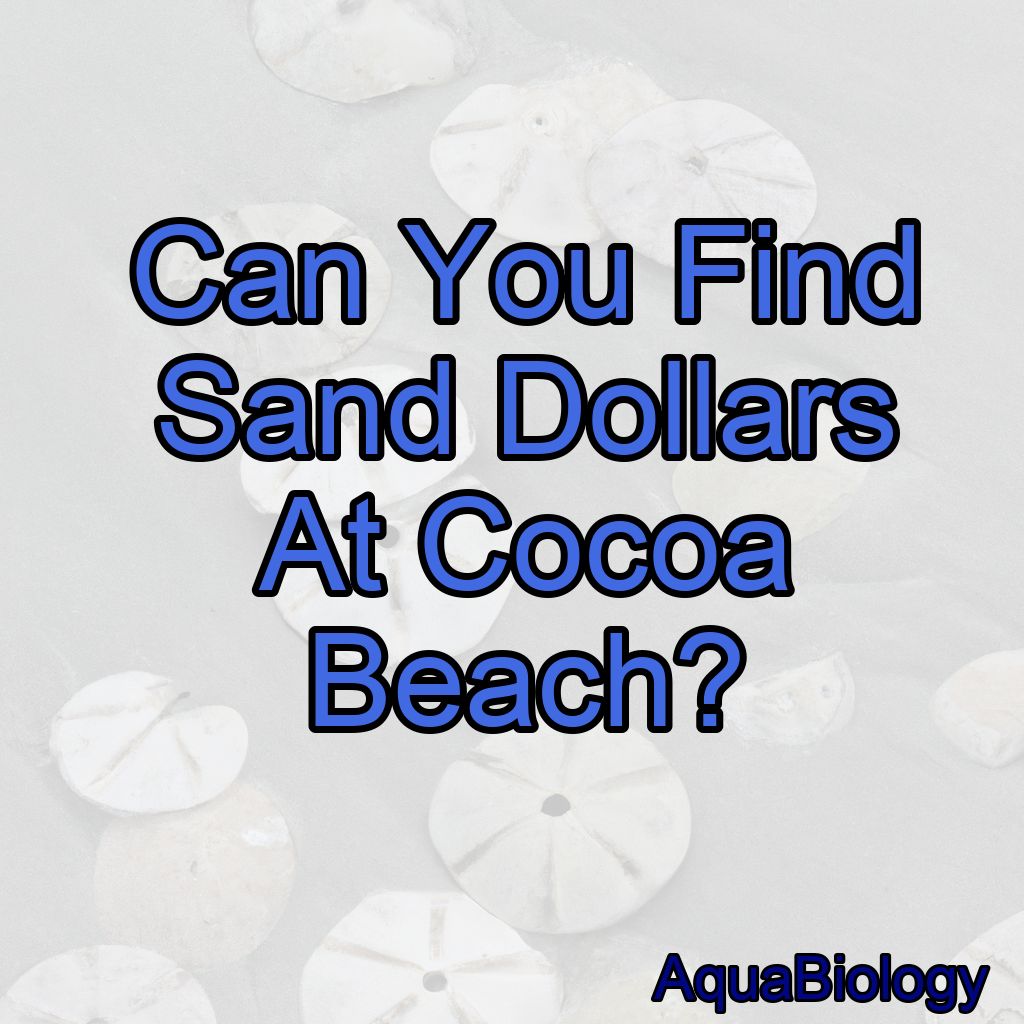As a marine biologist with a love for sand dollars, I have spent countless hours exploring the beaches of Florida, searching for these delicate and fascinating creatures.
Yes, you can find sand dollars at Cocoa Beach.
And one question that I am frequently asked is, “Can you find sand dollars at Cocoa Beach?”
The answer is yes! Cocoa Beach is a great place to search for sand dollars, and in this blog post, I will share with you everything you need to know about finding these beautiful creatures on this particular beach.
The Best Time to Search for Sand Dollars at Cocoa Beach
If you want to find sand dollars at Cocoa Beach, the best time to go is during low tide. At low tide, the water recedes, leaving behind a larger area of exposed sand where sand dollars can be found.
Additionally, it is recommended to go during the early morning or late afternoon, when the sun is not too hot and the beach is not too crowded.
How to Spot Sand Dollars at Cocoa Beach
Sand dollars are not always easy to spot, but there are a few things to look out for. First, look for areas of exposed sand that are not too rocky or covered in debris.
Sand dollars like to bury themselves in the sand, so you will need to keep an eye out for any bumps or slight depressions in the sand. Another key way to spot sand dollars is by looking for their distinctive markings – a series of five slots on the surface of the shell.
How to Care for Sand Dollars
If you are lucky enough to find sand dollars at Cocoa Beach, it is important to handle them carefully to avoid damaging them.
Sand dollars are fragile creatures, and their skeletons can easily break or crack.
The best way to handle a sand dollar is to gently pick it up by the edges and avoid touching the surface of the shell.
It is also important to keep your sand dollars moist, as they can dry out quickly and become brittle.

The Biology of Sand Dollars
Sand dollars are a type of echinoderm, related to sea stars and sea urchins.
They are found in shallow waters along the coastlines of many different countries and are known for their distinctive round shape and intricate markings.
Sand dollars feed on tiny particles of food that they sift from the sand using their tube feet, and they can live for up to ten years in the wild.
Why Sand Dollars are Important
Sand dollars are an important part of the marine ecosystem, playing a key role in maintaining healthy coastal environments. They help to break down organic matter in the sand and provide food for many different species of animals, including sea birds and small fish.
#
Conclusion: Yes, You Can Find Sand Dollars at Cocoa Beach
In conclusion, if you are looking to find sand dollars at Cocoa Beach, there are a few things to keep in mind.
Go during low tide, keep an eye out for areas of exposed sand, and handle your sand dollars with care.
And always remember to appreciate the beauty and importance of these fascinating creatures.
As a summary, here are 5 facts to remember:
1. You can find sand dollars at Cocoa Beach during low tide.
2. Look for areas of exposed sand and distinctive markings.
3. Handle sand dollars carefully to avoid damaging them.
4. Sand dollars are echinoderms that play an important role in the marine ecosystem.
5. Appreciate the beauty and importance of these fascinating creatures.
FAQs
Which SC beach is best for shelling?
Hunting Island State Park and Edisto Beach State Park are both great options for shelling in South Carolina.
What is the best time of year to go shelling in Florida?
The best time of year to go shelling in Florida is during the winter months, from December to February, when the water is cooler and calmer, and the beaches are less crowded.
What is the best beach to find sand dollars in South Carolina?
The best beach to find sand dollars in South Carolina is Hunting Island State Park.
Is shelling good at Cocoa Beach?
I don’t really have personal experiences here but according to experts, shelling at Cocoa Beach can be good depending on the time of year and weather conditions.
Some of the common shells found on the beach include scallops, conchs, sand dollars, and various types of clams.
It’s recommended to check the tide charts and visit during low tide for the best shelling opportunities.
What beaches are best for shelling?
Some of the best beaches for shelling include Sanibel Island in Florida, Ocracoke Island in North Carolina, and Cumberland Island in Georgia.
Is it legal to collect sand dollars in Florida?
It is legal to collect dead sand dollars in Florida, but it is illegal to take live ones as they are protected by state law.




